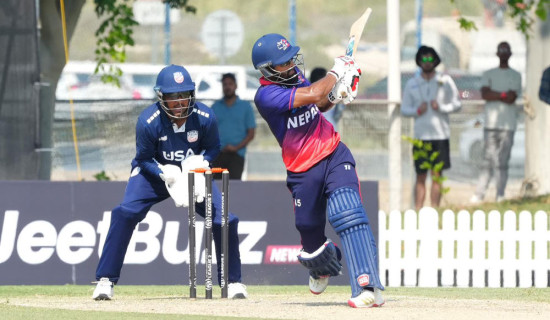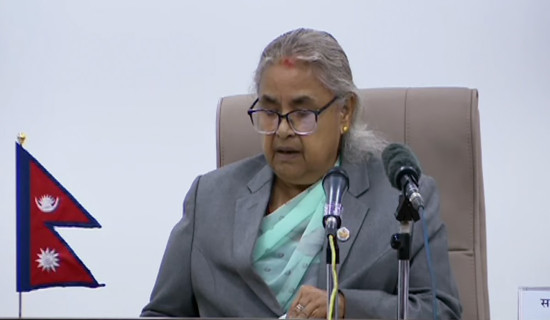- Sunday, 2 November 2025
Ganesh: The God Of Wisdom
Ram Dayal Rakesh
“Om Gan Ganapati Namo Namah
Sidhi Vinayak Namo Namah
Asta Vinayak Namo Namah
Ganapati bappa morya
Mangal moorti moraya.”
This Mul mantra was first of all mentioned in Ganapati Atharvarshastra.Ganpati Atharvarshastra is believed to have been written by Atharva Sage( Rishi) after having the Darshan of Lord Ganesh. Chanting this mantra 108 times early in the morning after bath continuously removes all evils and obstacles of life. Ganesha is also called Ganapati, and Vighneshwar. This mantra proves beneficial if chanted early in the morning.
This is also good to start your day by chanting this. He has been described as follows:
“Bulky, pot-bellied, elephant-headed and long-trunked Ganesh is a fascinating deity, most revered in Nepal. He is a wise and generous and kind god. All purposeful events must be proceeded by the worship of this amiable god. He also eats voraciously and is fond of sweets.”
Somnath and Ashadhar: Nepal: Land of Gods,Goddesses and demons. P.80
He is believed to be born on the auspicious occasion of the fourth day of Shukla Paksha of Bhadra ( fourth day of lunar fortnight) ,so it is called Ganesh Chaturthi.
This auspicious festival is celebrated with fanfare every year and is also known as Vinayak Chaturthi. It is customary to worship him with twenty-one blades of grass, a lotus flower and twenty-one Ladoos. He is fond of ladoos.
He is the favourite god of wisdom, learningand intellect,He is believed to remove all difficulties and grant success in our efforts.He is also the god of auspicious beginnings who is invoked at the beginning of every major undertaking.Every auspicious work is started with the salutation’ Sri Ganeshaya Namah.’
Ganesh is one of the sons of Lord Mahadev.The literary meaning of Ganesh is Lord of attendants (GANAS).One can easily recognise him because he has the head of elephant.
Legend
There is a legend that once Parvati went to the bathroom for bathing purposes.She employed
Ganesh as the gatekeeper of the bathroom. Lord SHIVA was very far away for many years.
When He returned home, he found a youth guarding the gate.He did not allow Him to enter her room, Shiva angrily cut of his head. When Parvati returned,she was very aggrieved at this event.Shiva tried his level best to please her but she was not happy.
Thereafter he ordered to bring the head of the first thing to be found to be placed on his son’s body but His attendant returned with the head of an elephant, he found first of all. Shiva convinced Parvati by saying that Ganesh would be the harbinger of good fortune to many worshippers. I would like to quote here:
“To offset this, it was decreed that Ganesh would be the bringer of good fortune to many worshippers, should be worshipped before all other gods could be worshipped, except Siva, and would be the medium for overcoming all obstacles.
So anyone beginning a business, writing an examination paper getting married and so on, would always worship Ganesh first.He is very popular all over India and is even found in remote cave shrines in Indonesia.” (Jeaneane Fowler: Hinduism: P. 35)
So he is addressed as the Elephant- headed God of Good Luck. A Nepalese scholar has described him as follows:
“One of the most popular deities of Nepal, worshipped by Hindus and Buddhists both, is Ganesha, as we can see, is an elephant-headed god with a big bulging belly and a dwarf body.” (Dhurba K. Deep: Popular Deities, Emblems & Images of Nepal.P.13)
There has been a long tradition in Nepal that small boys as Ganesh and small girls as Kumari (virgin goddess) are worshipped respectfully on several religious occasions. His vehicle is a very small rat which signifies that everything big in the world begins with the small .
It is believed that as soon as he rides his rat’s back he suddenly becomes as light as a feather. According to a religious text the bulky body of Ganesha as the cosmos in its entirety and his elephantine shape as the embodiment of cosmic intelligence.
There is another legend which says that he broke even his most precious tusk to write Mahabharata, the great Hindu epic for Vyasa, the great saint writer.The tusk to this day for many is a status sign of every precious possession and hence the symbol of pride.This great deed performed by Ganesha is to give us a lesson that service should always be placed above self.
There are several forms of Ganesh. Sometimes it is shown that he has four hands. Sometimes he has sixteen hands.
There is a statue of Ganesh who has sixteen hands and this type of statue can be seen on the southern and west corners of Ranipokhari in Kathmandu.
According to Mudgal Puran, there are about 32 different forms of Ganesh. This Puran has put emphasis on the importance of Ganesh riding a lion rather than the one on the rat.
The name of this type of Ganesh is Heramba. There are several images of Heramba Ganesh in Nepal. Druba K. Deep has mentioned the Heramba Ganesh in these lines:
“There is one in Patan right next to the entrance of a famed Sundari Chok of Patan Malla Palace which is, no doubt, a beautiful piece of work. ( Dhruv K.Deep: Popular r Deities, Emblems & Images of Nepal P. 24)
As described above He has four hands. His upper right-hand holds a hook and another one underneath holds a noose. According to D. K.Deep, the hook is to represent diving guidance that leads one to the right path and noose signifies the self-restraint. His trunk is to represent his fifth hand, a very unique symbol of divine strength.
The rosary in his third lower hand represents concentration which is a must for the development of spiritual knowledge. And, his fourth lower hand which is in the gesture of assuring with fearlessness is to signifies that he is their protector. Shiva, the father of Ganesh, gave him a boon which enjoins his devotees to worship Ganesh first before they proceed for anything further.
I would like to quote here:
“At this festival the elephant-headed God Ganesh, God of good fortune is worshipped. Model images of the God made in clay are carried through the streets and then dropped in the sea or lake, taking misfortune with them.” (Jeaneane Fowler: Hinduism P.74)
There is yet another legend which is once Lord Ganesh was returning after having a hearty feast and met INDRA DEV ( the god of heaven) on the way.
He laughed at his bulky body and his Vahan small mouse.He mocked him. Ganesh became furious and cursed the moon that no one in the universe will worship you and whoever even will look at the moon will face allegations when they are innocent. This mythical tale is very famous in the whole Mithila region.
Ganesh is a lover of Ladoos( Modak). There is a religious hyme which goes like this ‘Modak Priya mud mangal data’.
This also symbolizes an enlightened soul or Atma. The third eye of Ganesh stands for this inner vision through which he can see the entire universe crystal clear. The snake that twins around his belly signify his being the main source of energy in all active forms. His flappy fanlike ears suggest that he is full of attention to every word the mortals say.( D.K.Deep).
Ganesh Chaturthi is celebrated with great fans and fare all over in Nepal and India, especially in South India.It falls on the fourth day of Shukla Paksha in the month of Bhadra( sometime in August and September).
It also marks the end of the monsoon every year. Ganesh is invoked with great respect and reverence because he is the god of wisdom and learning and also the remover of obstacles. So his name is invoked before beginning a new work in every household. It is celebrated in every village school by students and teachers and also in cities. I would like to quote here:
“In the cities, the ten days of the Ganesh festival pass far too quickly. Every day there is a new programme and the decorations are changed. People of all communities, the young and the old, the rich and the poor, come to see the Ganapati's and the entire town appears like a carnival.” (Festivals of India P.42)0
Generally, Ganesh is considered a vegetarian God like other Gods of the Hindu pantheon but in the Kathmandu valley, some of his devotees offer him eggs to please him.
Mary M. Anderson is right to make this remark “Although in India Lord Ganesh is not considered a bloodthirsty god, in Nepal sacrifices, are regularly made to his idol.”( 1971) It seems awkward for most of the devotees who worship him with respect and reverence.
He is a very popular and generous God of well-being. So he is worshipped widely in the whole world.I would like to quote here:
“An idol of Ganesh is worshipped in every home regardless of caste, creed or status. Each neighbourhood, village, city or region has its own Ganesh temple and holds an annual festival in his honour.
Women fast every Tuesday, the day set aside to honour Ganesh. Unmarried girls seek his assurance of good husbands; pregnant wives seek his blessing for vigorous, clever offspring; while men beg him for success in all their pursuits.” (Mary M. Anderson: The Festivals of Nepal:P.122p)
(The author writes on culture and religion)
How did you feel after reading this news?

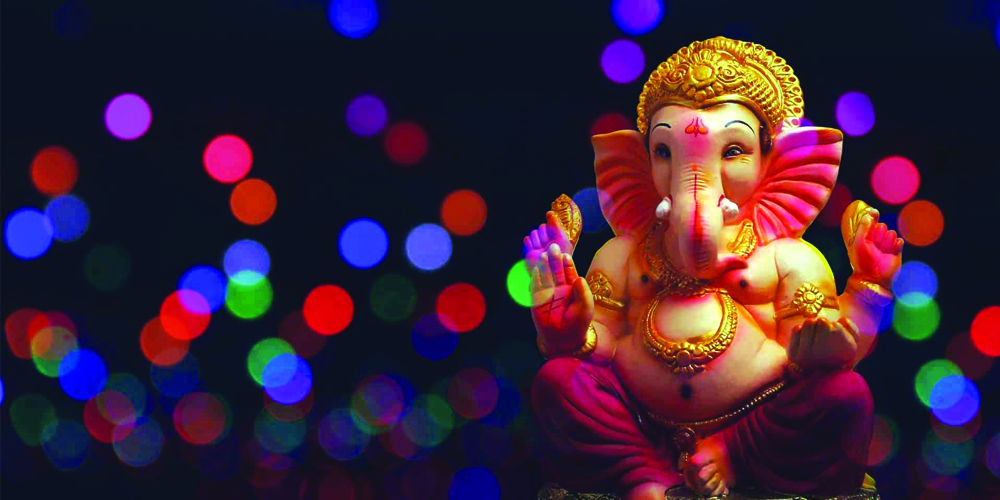
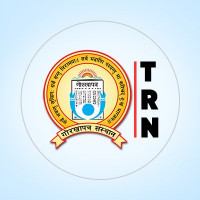

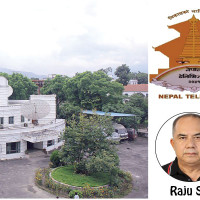




-original-thumb.jpg)


